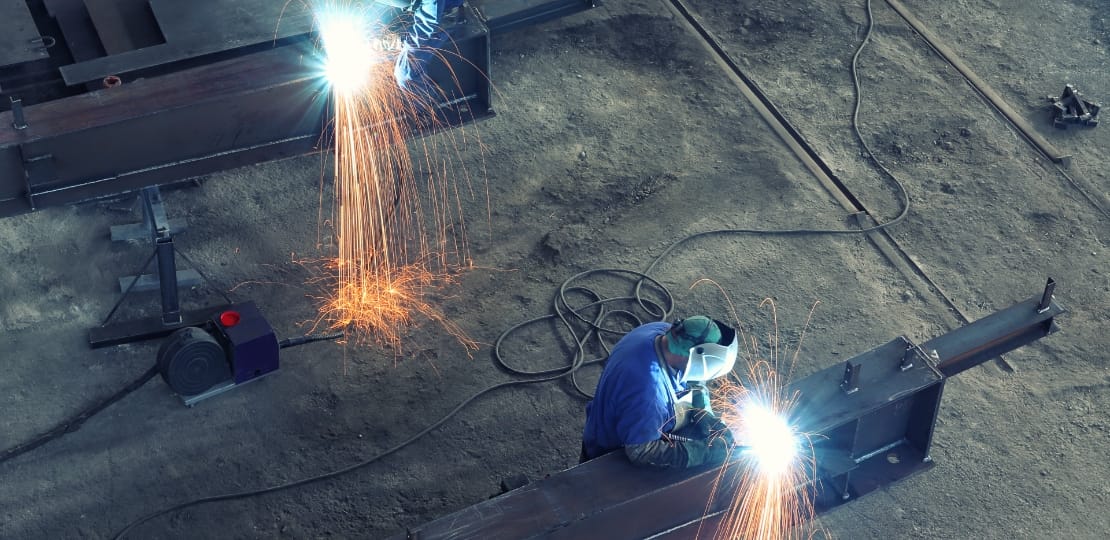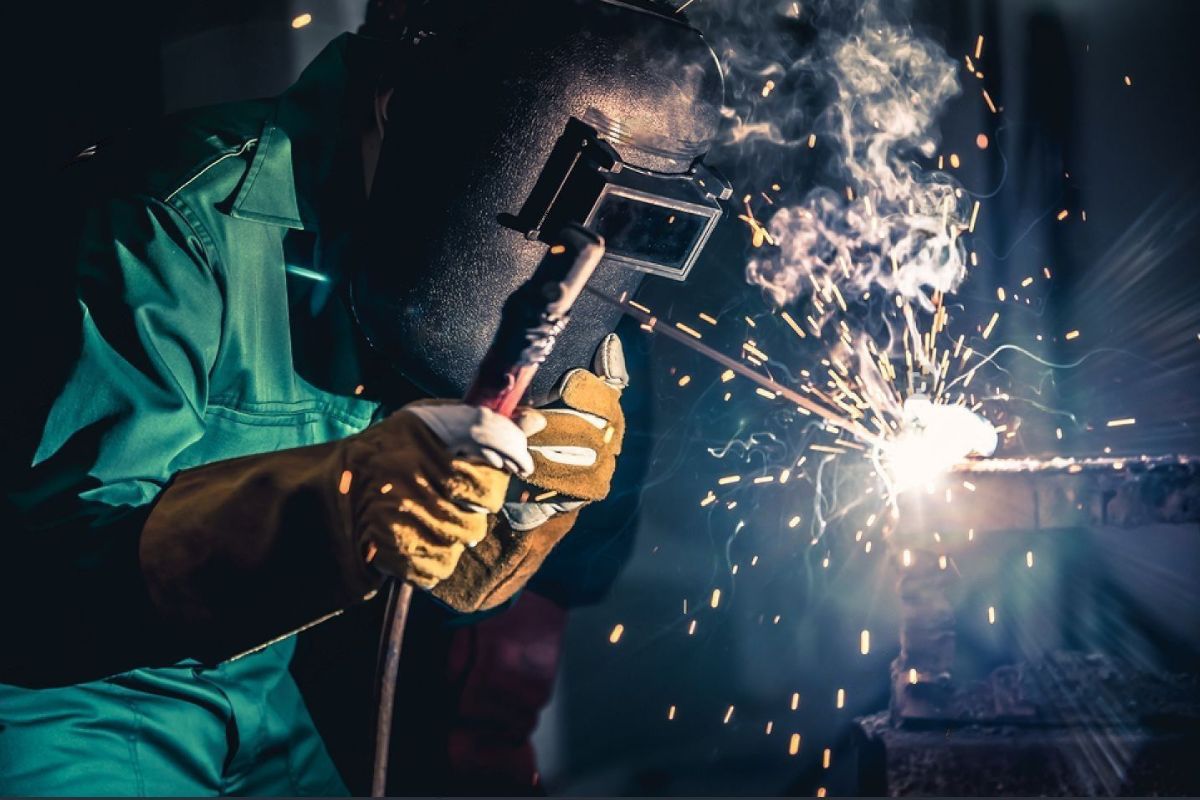Typical Welding Repair Work Issues and Exactly How to Address Them Effectively
Welding fixings commonly come across a variety of concerns that can endanger the honesty of the last item. Typical troubles consist of inadequate infiltration, porosity, and imbalance, to name a few. Each flaw provides one-of-a-kind difficulties that call for details techniques for resolution. Recognizing these problems is necessary for welders aiming to boost their results and abilities. This conversation will check out these common welding fixing issues and reliable approaches to address them.
Inadequate Penetration
Poor infiltration takes place when the weld metal stops working to totally fuse with the base material, causing weak joints and prospective architectural failings. This problem often stems from inadequate warmth input, inaccurate electrode angle, or inappropriate welding speed. Welders might run into poor infiltration as a result of a miscalculation of the essential parameters for a details product density or type. Furthermore, contamination on the base product's surface can impede efficient bonding, exacerbating the problem. To resolve poor infiltration, welders ought to ensure appropriate setups on their equipment and maintain a clean work surface. Routine examination of welds is suggested to recognize any type of shortages early, enabling timely modifications and the avoidance of jeopardized architectural integrity in bonded settings up.
Porosity
Porosity is a typical problem in welded joints that manifests as small gas bubbles caught within the weld steel. This flaw can compromise the honesty of the weld, causing decreased strength and potential failing under stress. Montana Mobile Welding and Repair Belgrade. Porosity usually arises from contamination, dampness, or improper welding strategies, which enable gases to leave into the liquified weld swimming pool. To attend to porosity, welders need to ensure correct surface area preparation, preserve a tidy workplace, and use suitable welding parameters. Additionally, picking the ideal filler product and shielding gas can alleviate gas entrapment. Regular assessment and testing of welds can aid determine porosity early, ensuring prompt restorative activities are taken, thus maintaining the quality and integrity of the bonded structure
Misalignment
Misalignment in welding can develop from numerous factors, consisting of incorrect arrangement and thermal growth. Understanding the origin triggers is important for reliable resolution. A number of adjustment techniques are offered to straighten components and assure architectural integrity.
Root causes of Imbalance
Welding misalignment frequently comes from a selection of underlying concerns that can endanger structural stability. One primary cause is inappropriate fit-up of elements before welding, which can result in gaps and uneven surface areas. Variants in thermal growth throughout the welding process can also lead to distortion, specifically if the products being joined have various coefficients of growth. In addition, poor fixturing and clamping may fail to hold components securely in area, resulting in motion throughout welding. Poorly conserved devices, consisting of welding makers and tools, might introduce inconsistencies in the weld bead, further adding to imbalance. Ultimately, operator mistake, coming from insufficient training or experience, can additionally play a considerable function in producing misaligned welds.
Improvement Strategies Available
Attending to misalignment efficiently requires a combination of corrective strategies customized to the specific issues handy. One typical technique is making use of components or jigs to hold parts in the correct placement during welding, ensuring regular placement. Additionally, preheating the materials can help in reducing distortion and improve fit-up. For considerable imbalance, mechanical realignment techniques, such as using hydraulic jacks or clamps, can be used to fix the position before welding. Post-weld warmth treatment might additionally be required to eliminate stress and anxieties created by imbalance. Cautious evaluation and modification during the configuration phase can stop misalignment issues from ending up being substantial troubles, promoting a smoother welding process and improving total architectural honesty.
Distortion
Distortion is a typical difficulty in welding that can emerge from numerous aspects, consisting of irregular cooling and heating. Understanding the reasons of distortion is essential for executing efficient avoidance methods. Addressing this concern not just improves architectural honesty yet additionally improves the overall top quality of the weld.
Sources of Distortion
When subjected to the extreme warm of welding, materials often undergo adjustments that can result in distortion. This phenomenon mainly develops from thermal growth and contraction throughout the welding procedure. As the weld area warms up, the product increases; upon cooling, it acquires, which can develop inner tensions. Furthermore, irregular heating throughout a workpiece can exacerbate these stress and anxieties, resulting in bending or bending. The kind of product additionally plays a substantial function; steels with varying thermal conductivity and coefficients of expansion might respond in different ways, bring about unpredictable distortions. Furthermore, poor joint style and insufficient fixturing can add to imbalance during welding, increasing the probability of distortion. Recognizing these reasons is crucial for reliable welding repair service and avoidance strategies.
Avoidance Techniques
Effective check this site out prevention techniques for distortion throughout welding concentrate on controlling warm input and ensuring appropriate joint style. Maintaining a consistent warmth input assists to minimize thermal expansion and contraction, which can bring about distortion. Utilizing techniques such as preheating the work surface can additionally decrease the temperature gradient, promoting consistent heating. In addition, choosing proper joint styles, such as T-joints or lap joints, can improve security and minimize tension concentrations. Implementing correct fixturing to protect the work surfaces in position additionally aids in preserving alignment during the welding procedure. Ultimately, staggered welding series can disperse warmth much more evenly, protecting against localized distortion. By applying these strategies, welders can substantially lower the probability of distortion and improve the overall high quality of their welds.
Breaking
Breaking is a common concern encountered in welding repair work, usually resulting from different variables such as inappropriate air conditioning rates, product option, or poor joint prep work. The incident of fractures can significantly endanger the stability of the weld, resulting in possible failings throughout procedure. To resolve this problem, welders have to first examine the origin, guaranteeing that products work and suitably selected for the particular application. In addition, controlling the air conditioning rate throughout the welding procedure is necessary; fast cooling can generate tension and lead to splitting. Appropriate joint design and preparation likewise add to lessening the threat. Executing these techniques can enhance weld top quality and durability, ultimately decreasing the possibility of breaking in completed weldments.

Insufficient Fusion
A significant problem in welding fixings is insufficient fusion, which occurs when the weld metal does not adequately bond with the base product or previous weld passes - Belgrade Fabrication. This issue can result in weaknesses in the joint, possibly endangering the honesty of the bonded framework. Variables contributing to incomplete blend consist of inadequate warm input, improper welding strategy, and contamination of the surfaces being joined. To resolve this issue effectively, welders ought to ensure proper pre-weld cleansing and surface preparation, along with adjust their welding criteria to achieve sufficient infiltration and blend. Regular examination throughout the welding procedure can likewise aid recognize insufficient fusion early, enabling about his for prompt rehabilitative measures to enhance the overall quality of the weld
Overheating
While welding fixings can improve architectural stability, overheating offers a significant obstacle that can bring about product deterioration. Excessive warmth throughout welding can alter the mechanical residential or commercial properties of metals, resulting in minimized strength, enhanced brittleness, and warping. This phenomenon is specifically vital in high-stress applications where structural reliability is critical. Identifying overheating can include visual assessments for staining or distortion, as well as checking temperature throughout the welding process. To reduce the threats linked with overheating, welders should utilize appropriate strategies, such as regulating heat input, adjusting travel speed, and using appropriate filler materials. Furthermore, applying pre- and post-weld heat therapies can aid bring back material residential properties and enhance the total high quality of the repair work, ensuring long-term efficiency and security.
Frequently Asked Questions
What Are the Typical Indicators of a Welding Problem?

Exactly How Can I Check My Welds for High quality?
To evaluate welds for high quality, one can make use of aesthetic inspections, ultrasonic testing, and radiographic approaches. Each technique ensures structural honesty, identifies flaws, and verifies adherence to specified criteria, inevitably improving the integrity of the welded joints.
What Safety and security Safety Measures Should I Take While Welding?
When welding, one ought to prioritize safety by using suitable personal protective devices, guaranteeing proper ventilation, safeguarding combustible products away, maintaining a tidy work space, and understanding environments to avoid crashes and injuries.
Can I Fix a Weld Without Redoing the Entire Joint?
Fixing a weld without redoing the entire joint is possible, relying on the damages (Montana Mobile Welding and Repair Fabrication). Strategies such as grinding, adding filler product, or making use of a welding process can properly resolve details defects while preserving the bordering structure
What Equipment Are Necessary for Effective Welding Services?
Essential tools for efficient welding repair work consist of a welding machine, cord brush, grinder, protective gear, clamps, and filler products. Each device plays an important function in guaranteeing high quality and security during the repair procedure. Porosity usually occurs from contamination, dampness, or inappropriate welding strategies, which permit gases to escape into the liquified weld pool. Badly maintained devices, consisting of welding equipments and tools, might introduce inconsistencies in the weld grain, more contributing to imbalance. When subjected to the intense heat of welding, materials frequently go through adjustments that can lead to distortion. Splitting is an usual issue experienced in welding fixings, frequently resulting from different elements such as incorrect air conditioning rates, material selection, or insufficient joint prep work. A significant problem in welding repair work is insufficient fusion, which takes place when the weld steel does not sufficiently bond with the base material or previous weld passes.